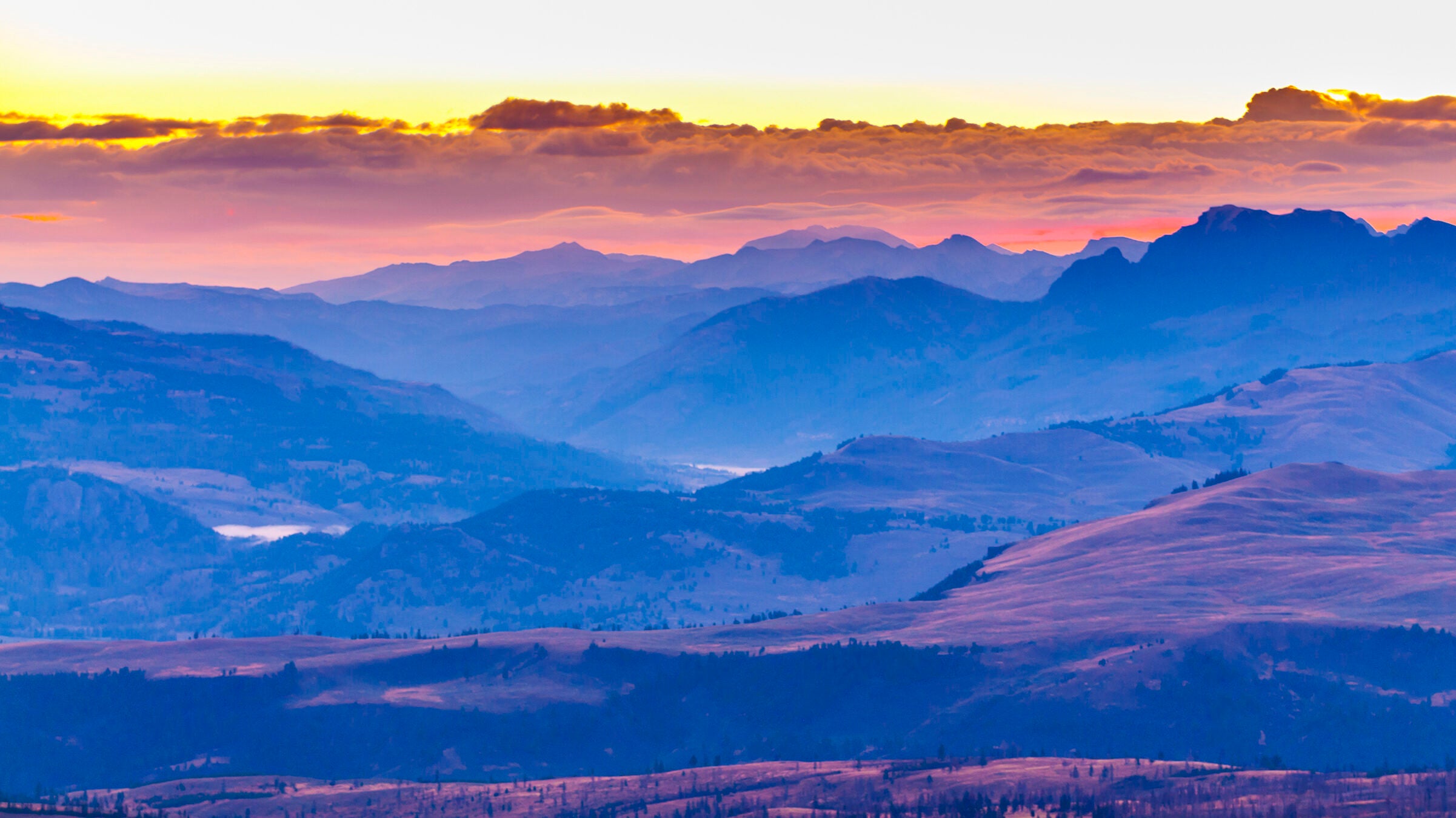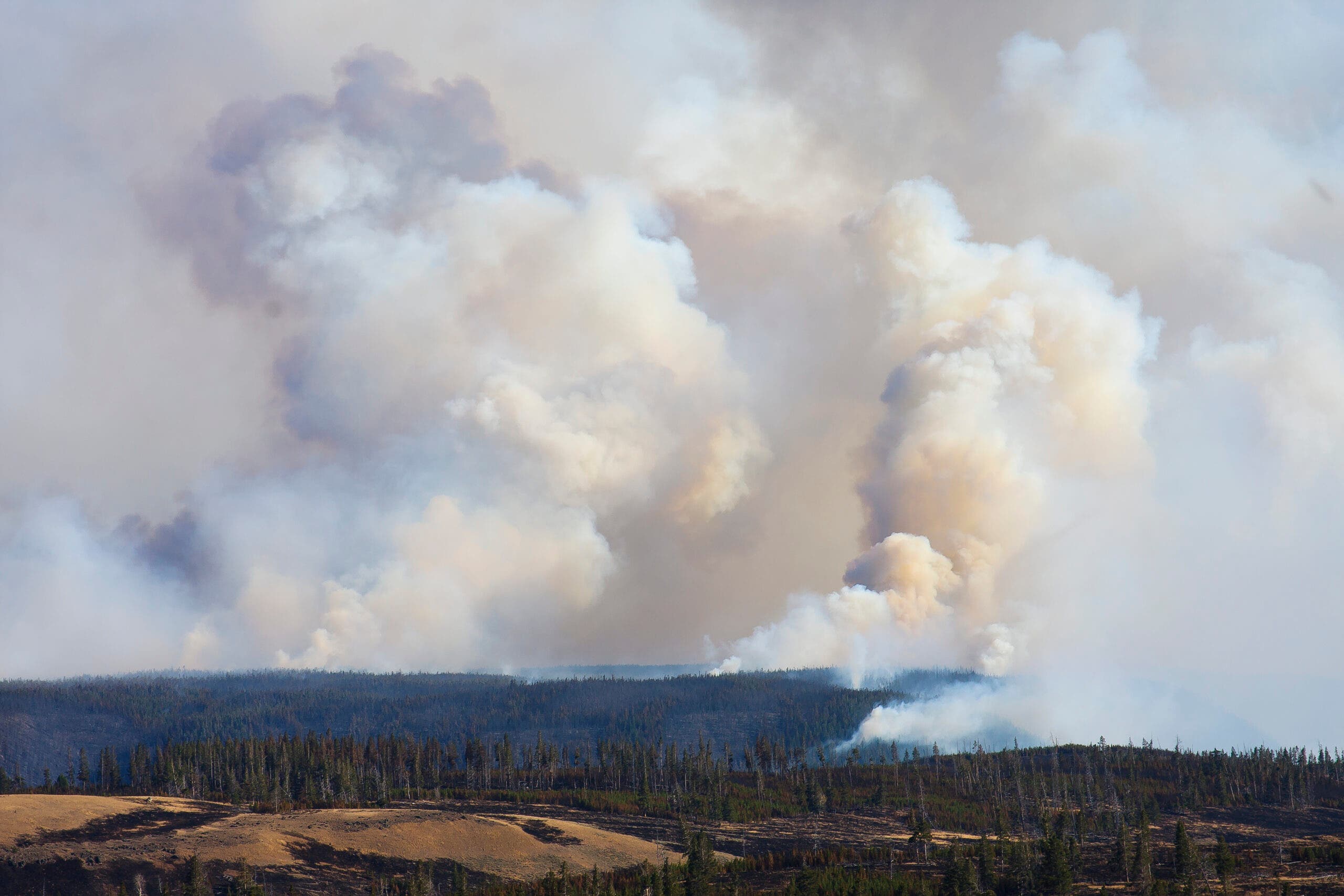Catch an Endless Sunrise on this Perfect Yellowstone Hike

Beautiful View from the Mount Washburn early morning at sunrise - Yellowstone National Park (Photo: Kwiktor/iStock via Getty Images)
We’re sharing this preview of our 5 favorite sunrise hikes for free; you can read the whole thing with your Outside+ membership. Not a member? Sign up today and get access to everything we publish, plus free subscriptions, a Gaia GPS membership, and much more.
Mt. Washburn, Yellowstone National Park, WY
Bag the highest peak in Yellowstone National Park and catch the sunrise on this 6.4-mile round-trip hike. The lookout tower at the top, one of three in Yellowstone, is still active: Firefighters trained to recognize wildfire signs stay in the lookout continuously from mid-June until that year’s fire season ends. Other than the single human resident in the tower, the mountain is frequented by black bears, grizzly bears, bison, mountain goats, bighorn sheep, and wolves—nearly all of Yellowstone’s most iconic species.
On a clear day you can see for 50 miles in all directions from Washburn’s summit. Though you’ll need to get a very early start, the 360-degree views of the sun coming up over the mountains, geothermal pools, and wildlife-filled valleys of Yellowstone will make the alarm, the drive, and the lost sleep more than worth it. Bonus: Mt. Washburn is one of the most popular day hikes in the park, but few tourists, or even locals, will be headed up while it’s still dark out, so you’ll likely get to enjoy the sunrise solo.
Fire in Yellowstone

As the fire tower suggests, Yellowstone has a key place in the history of American wildland firefighting. In the early days of the park, the only approach used was total suppression: Put out every fire that starts, anywhere, in any way. This let a thick layer of dead branches, leaves, and grass build up on the forest floor—the perfect fuel for a fire. The federal government abandoned abandoned after the Mann Gulch Fire in nearby Montana killed 13 smokejumpers in 1949, leading to intense scrutiny of contemporary fire management methods and a shift to acknowledge the importance of fire in forest ecology. Yellowstone quickly changed its own fire management methods, letting naturally started fires burn themselves out and setting prescribed burns, before shifting back toward total suppression after an intense wildfire torched 36% of the park in 1988. Today’s policies feature closer fire monitoring, allow for the suppression of natural fires if necessary, and removal of fuel around human-occupied areas.
The Trail
Start from the Dunraven Pass trailhead, around 5 miles north of Canyon Village. The climbing starts immediately, contouring around the mountain before starting to switchback at mile 1.5. The trail levels off after the switchbacks, then joins Chittendon Road for the rest of the ascent to the lookout tower (keep left). In total, the route gains 1,400 feet over 3.2 miles.